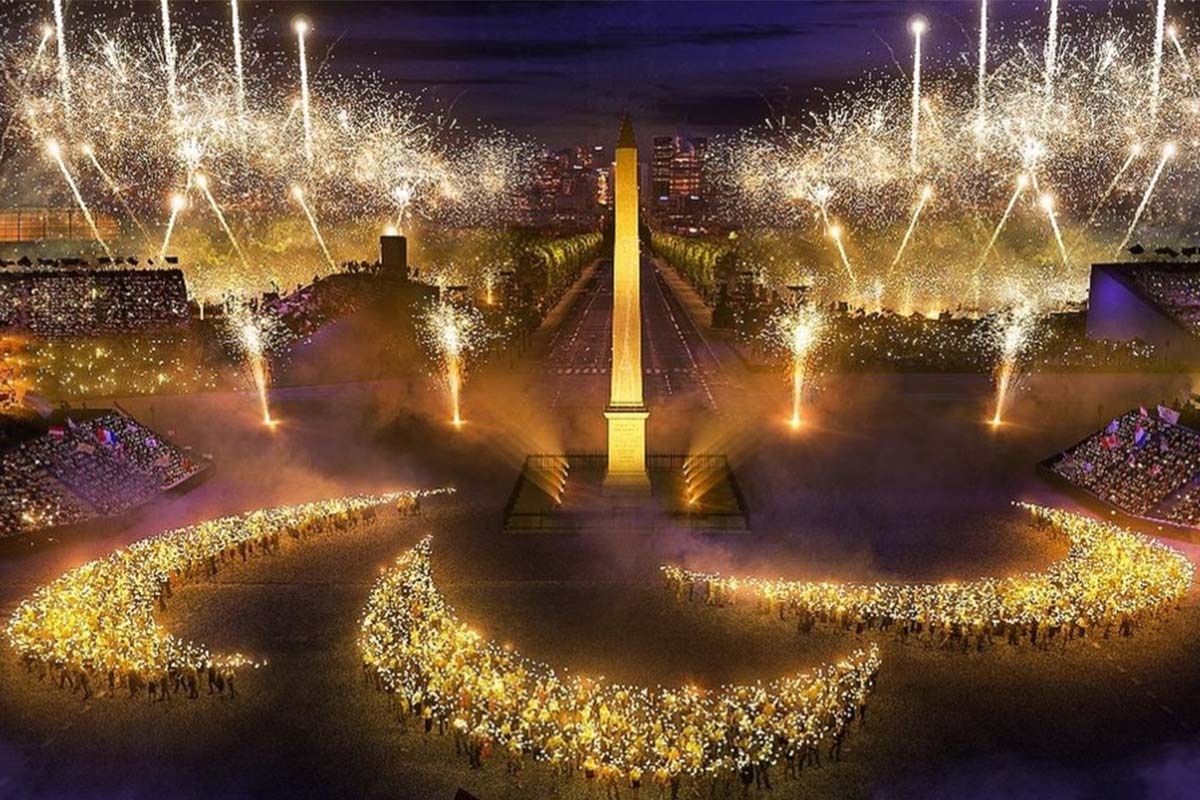Head of the International Paralympic Committee calls for a ‘revolution of inclusion’ in moving opening ceremony
The 17th Paralympic Games began under blue skies then lit up the night as Paris made a powerful start in extending to disability sport the same energy and joy that has so far characterised its historic summer.
In the coming 11 days there will be new heroes made, new stories told and, just perhaps, the possibility of a legacy of positive change for people with disability. But in front of a crowd of 35,000 spectators at the Place de la Concorde, a ceremony threaded together by bold, expressive dance and featuring a parade of 128 often jubilant competing nations created a party atmosphere, and an image of a country still “en fete”.
As the head of the International Paralympic Committee, Andrew Parsons called for a “revolution of inclusion” in his speech and the president of Paris 2024, Tony Estanguet, praised the fans, “la public complètement fou”, there was space left for the French president, Emmanuel Macron, only to perform the briefest of ceremonial functions, declaring the Games open, as the energy of night swarmed elsewhere.
Unlike the Olympic opening ceremony there were no shots of sodden performers to spoil the party. Temperatures of 30C and cloudless skies meant that everything passed without disruption and the tribunes were full. By the time the French delegation arrived in the arena past 10pm to the sounds of Champs-Élysées and various other pieces of chanson that remain in the collective memory, the spirit of the summer of 2024 was once again in full effect.
Involving 500 performers, including dancers, pop stars, furry revolutionary hats and the ubiquitous DJ, the title of the ceremony was Paradox, the theme a journey from Discord to Concord. As with every aspect of Paris 2024 this was an idea pinned to the geography and history of the French capital.The ceremony began in the “wide open” fashion, in public, with Paralympic delegations passing down a section of the sun-drenched Champs-Élysées and a collection of Unesco executives, rappers and Jackie Chan joining them as part of the torch relay. What Parisians describe as “the greatest avenue in the world” is traditionally the place where France salutes its heroes (with a parade for the stars of the Olympics to come in September). But the Élysées did not feature in the Games earlier this summer and has been reserved for the Paralympics, where it will also feature as part of the marathon on the final day of competition.
From the open streets the ceremony moved to a ticketed event at the Place de la Concorde. Once the Place de la Revolution, site of the execution of Louis XVI and Marie Antoinette, it was renamed in 1795, an act according to Paris 2024 creative director Thomas Jolly, “to appease and reconcile the French”, making the square itself a “place of paradox”.
Jolly argues that the ceremony explores a further need for reconciliation: between the 15% of the global population who have a disability and the societies that ignore their needs. “Living together better starts with mutual consideration”, he says, “then we can repair, reconcile, adapt and move forward together better.”Ironically, in the week when one of Britain’s greatest Paralympians – Dame Tanni Grey-Thompson – was forced to drag herself out of her wheelchair and off a train in London as she sought to make her way to the Games, Jolly said the ceremony would make the argument that “disability is not a flaw in the person, it is the architecture, practices, attitudes, lifestyles and models of society that create the ‘situation’ of disability for these people.”
Broken into five acts, the ceremonies performances were directed by the Swedish choreographer Alexander Ekman, brought on board by Jolly to bring energy and humour to proceedings. This was a decision immediately vindicated. The introductory segment saw French swimmer and model Théo Curin, who has neither hands nor feet, assembling a taxi of Phrages, a furry red private hire vehicle he takes to the arena to deliver his one line: “Welcome to Paris!” (He does so with aplomb).
From there the spectacle exploded into life in a whirl of dancers and stirring music. The performances included Christine and the Queens delivering an updated and almost unrecognisable Je Ne Regrette Rien and a performance of Ravel’s Bolero so robust and powerful it consigned all memories of Torvill and Dean to the bin. The performers were a mixture of disabled and non-disabled, sometimes dancing in opposition (discord) but ultimately coming together (concord) in a piece called Sportography which incorporated sporting movement and artistic expression alongside wild visuals projected on to the obelisk at the heart of the square. All of this performance was carried by the incredible talent of South African amputee dancer Musa Motha.After three and a half hours of spectacle and speeches, the last act was to once again light the Olympic cauldron and send the bronzed balloon into the Paris night sky. According to Ekman: “I often find that words are worthless and that images, or the situations they illustrate, are much more valuable.” On a night like this, it was difficult to argue he was wrong.












